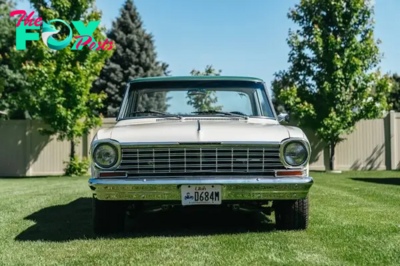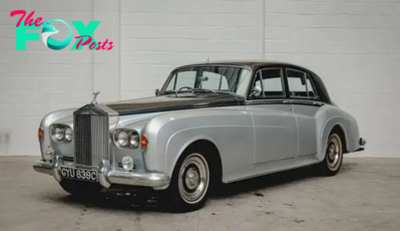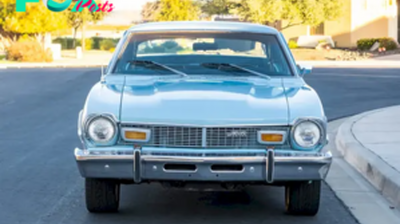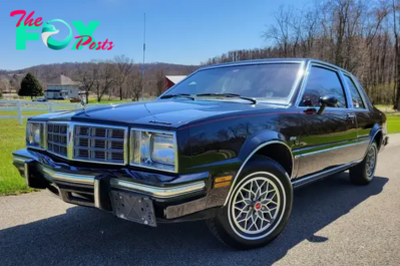Entertainment
DQ The 1951 Pontiac Chieftain: Iconic Elegance Embodied in American Automotive History
In the post-World War II era, the American automobile industry experienced a surge in innovation and design. The 1951 Pontiac Chieftain is a shining example of this period, showcasing both the advancements in automotive engineering and the distinctive styling that characterized the time. In this comprehensive article, we will delve deep into the History, design, technical specifications, cultural impact, and legacy of the 1951 Pontiac Chieftain.

Historical Context

The 1950s marked a significant period of transformation for the American automotive industry. After the war, car manufacturers shifted their focus from wartime production to catering to the demands of a peacetime economy. This shift led to the introduction of new models, technological advancements, and a design revolution that aimed to capture the imagination of consumers.
Pontiac, a division of General Motors (GM), was no exception to this trend. The 1951 Pontiac Chieftain was a crucial part of the company’s strategy to comPete in the post-war automobile market, and it played a pivotal role in Pontiac’s History.
Design and Styling

The 1951 Pontiac Chieftain was a stylish and innovative car that reflected the design ethos of the early 1950s. One of its most distinctive features was its “Silver Streak” styling, which was a hallmark of Pontiac’s design language during this period. The Silver Streak referred to the chrome strips that adorned the hood and trunk of the car, creating a distinctive and eye-catching appearance.
The Chieftain was available in several body styles, including a four-door sedan, two-door sedan, convertible, and station wagon. Each body style had its own unique charm, but they all shared common design elements that made the Chieftain instantly recognizable.

One of the defining features of the 1951 Chieftain was its bold front grille. The grille consisted of a series of horizontal chrome bars with a prominent Pontiac emblem at the center. The grille was flanked by sleek, integrated headlights that gave the car a modern and distinctive look.
In terms of dimensions, the Chieftain was a full-sized car, offering ample interior space for passengers and luggage. The car’s long, flowing lines and gently curved fenders contributed to its elegant and timeless design.
Technical Specifications

The 1951 Pontiac Chieftain was available with a range of engine options, allowing buyers to choose the level of performance that suited their preferences. One of the most popular engine choices was the inline-eight-cylinder engine, which was available in both flathead and overhead-valve configurations.
The flathead inline-eight produced around 102 horsepower, while the overhead-valve version generated approximately 116 horsepower. These engines were mated to either a three-speed manual transmission or an optional Hydra-Matic automatic transmission, which was a relatively new and advanced feature at the time.
The Chieftain featured a coil spring suspension system that provided a comfortable ride, and it had a solid rear axle. Power steering and power brakes were available as optional features, enhancing the car’s handling and stopping capabilities.
Interior and Comfort

The interior of the 1951 Pontiac Chieftain was designed with both style and comfort in mind. The car’s spacious cabin accommodated six passengers, with a front bench seat and a rear bench seat. The materials used in the interior were of high quality, with a range of upholstery options that allowed buyers to customize the look and feel of their Chieftain.
The dashboard featured a modern and functional design, with a prominent instrument cluster that included a speedometer, fuel gauge, and other essential gauges and controls. The steering wheel was elegantly styled and comfortable to hold, further enhancing the driving experience.

One of the standout features of the Chieftain’s interior was its attention to detail. The car’s interior trim and finishes were well-crafted, and the overall design created an inviting and luxurious atmosphere for passengers.
Performance and Driving Experience

The 1951 Pontiac Chieftain offered a balanced combination of performance and comfort, making it a popular choice among buyers of the era. The inline-eight-cylinder engines provided ample power for highway cruising and city driving, and the optional Hydra-Matic automatic transmission made driving even more convenient.
The car’s suspension system, with its coil springs and solid rear axle, delivered a smooth and comfortable ride. The Chieftain handled well for its size, and the optional power steering made maneuvering in tight spaces easier.
In terms of fuel efficiency, the Chieftain’s performance was typical for cars of its era. It was not a fuel-efficient vehicle by today’s standards, but it provided respectable mileage for the time.
Cultural Impact and Popularity

The 1951 Pontiac Chieftain was released during a time when automobiles were more than just transportation; they were symbols of status, style, and prosperity. As such, the Chieftain quickly became a cultural icon and a symbol of American automotive excellence.
One of the notable cultural references featuring the 1951 Chieftain is its appearance in the classic film “American Graffiti” (1973), directed by George Lucas. The film is set in the early 1960s and showcases the car culture of the era. A 1951 Pontiac Chieftain is prominently featured in the movie, further solidifying its status as a beloved classic car.

The Chieftain also enjoyed popularity in various car shows, parades, and classic car gatherings. Enthusiasts and collectors cherished these vehicles for their distinctive styling, historical significance, and the nostalgia they evoked.
Legacy and Collectibility

Today, the 1951 Pontiac Chieftain holds a special place in the hearts of car enthusiasts and collectors. Its unique styling, historical significance, and representation of a bygone era make it a sought-after classic car.
Collectors often look for well-preserved or restored Chieftains, and originality is highly valued in the vintage car market. Finding a Chieftain in excellent condition, with its original engine and interior, can be a rare and rewarding experience for enthusiasts.

Restoration projects are also common among those who appreciate the beauty and craftsmanship of the Chieftain. Restoring one of these classic cars to its former glory is a labor of love that allows individuals to preserve a piece of automotive History.
The 1951 Pontiac Chieftain has also become a valuable collector’s item, with prices varying depending on factors such as condition, rarity, and the presence of desirable features. Exceptional examples of the Chieftain can coMMAnd significant prices at auctions and in private sales.
Conclusion

The 1951 Pontiac Chieftain represents an important chapter in the History of American automobiles. Its striking design, advanced engineering, and cultural impact make it a classic car that continues to captivate the imaginations of automotive enthusiasts and collectors.
As a symbol of post-war optimism and American ingenuity, the Chieftain reminds us of a time when cars were more than just transportation; they were works of art and expressions of individuality. Today, whether on display at a car show, featured in a classic film, or lovingly restored by a collector, the 1951 Pontiac Chieftain remains a timeless icon of automotive history, a testament to the enduring allure of classic American automobiles.
-

 Entertainment2h ago
Entertainment2h agoAubrey O’Day claims Diddy tried to buy her silence with publishing rights
-

 Entertainment2h ago
Entertainment2h agoBritney Spears seen for the first time after settling conservatorship case with father Jamie
-

 Entertainment5h ago
Entertainment5h agoTeatro Actual’s Die Meistersinger von Nürnberg falls wanting expectations – Seen and Heard Worldwide
-

 Entertainment5h ago
Entertainment5h agoEach TV Sequence Coming to Disney+ in Could 2024
-

 Entertainment9h ago
Entertainment9h agoDua Lipa playfully hugs boyfriend Callum Turner during NYC date night
-

 Entertainment9h ago
Entertainment9h agoPauly Shore says he was ‘up all night crying’ after Richard Simmons said he did not approve biopic
-

 Entertainment10h ago
Entertainment10h agoMumbai Crime Branch Detains Actor Sahil Khan in Mahadev Betting App Case
-

 Entertainment12h ago
Entertainment12h agoSatan Could Cry: Peak Of Fight | Dante: Blazing Tempest Gameplay Trailer

























